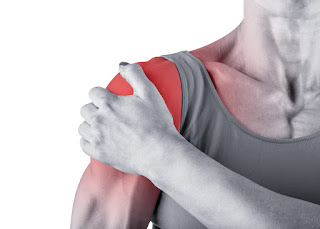What is shoulder pain?
People who spend a lot of time on laptops, smartphones, and tablets are often seen complaining of shoulder pain. But many reasons and conditions can cause shoulder pain. If there is a pain in the shoulder, it becomes difficult to concentrate on any other work. This shoulder pain can occur in any muscle, ligament, or tendon and around the shoulder. Shoulders can be damaged by any type of physical exertion, such as sports or doing the same movement over and over again. Some diseases can also occur due to shoulder pain, including diseases related to the cervical and liver, heart, or gall bladder.
Causes of shoulder pain:
rotator cuff disorder.
Common symptoms caused by rotator cuff injuries include pain on both sides and front of your shoulder, pain mostly at night, pain when moving your arm at certain angles with the body, and pain when combing or combing hair. Pain occurs during activities such as wearing clothes that involve movements of your arm. Different types of rotator cuff disorders include tendonitis and bursitis, rotator cuff syndrome, and tear.
frozen shoulder
Frozen shoulder or adhesive capsulitis is a painful stiffness of your shoulder joint that restricts normal shoulder movements. Due to this, daily tasks like sleeping or dressing can be trouble. People over the age of 40 experience frozen shoulders.
a broken arm or broken collarbone
Your broken arm may involve three or more bones in your arm (ulna, radius, and humerus). The protrusion of your arm can lead to a broken arm. It causes severe pain and swelling. You will also find it difficult to bend your arm.
acromioclavicular joint disorder
The joint at the top of your shoulder is known as the acromioclavicular joint
Common acromioclavicular joint disorders may include osteoarthritis (making the joints stiff and therefore painful), torn ligaments, and complete or partial dislocation of the acromioclavicular joint. As a result, a person may suffer from pain in the joints and resultant limited movements. Men between the ages of 20 and 50, who are particularly into sports, are most likely to pass on these disorders.
shoulder instability
The shoulder joint is a ball and socket joint. Shoulder instability occurs when the normal movement of the ball part of your shoulder inside the socket is restricted. A complete shoulder dislocation is also possible when the ball slips out of the socket causing severe pain or muscle spasms. A person may experience numbness, weakness, or a tingling sensation due to instability of the shoulder.
There are two types of shoulder instability – traumatic (when the shoulder slides out of place with a sudden jerk) and atraumatic (when the shoulder slides out slowly over time).
thoracic outlet syndrome
These are a bunch of disorders that occur when the blood vessels between the collarbone and the thoracic outlet (the first rib) are constricted.
This causes pain in the shoulder and numbness in the fingers. Accidents, sports, physical defects, and pregnancy are common causes. The patient may require therapy or surgery for recovery.
Symptoms of shoulder pain:
1. Feeling pain when using the arms and shoulders in some work.
2. Feeling tingling and numbness after touching the injured area.
3. Sudden severe pain in moving the arm and difficulty in eating and drinking.
4. The pain in the shoulder joint does not go away for months and years.
5. Stiffness of the shoulders in being able to lift anything.
Read More –
ACIDITY ! गैस का बनना, एसिडिटी बनने के कारण
मस्सा क्या होता है? : कारण, लक्षण और प्रकार
STOMACH ULCER ! पेट का अल्सर, गैस्ट्रिक अल्सर, अल्सर क्या है
ENCEPHALITIS (इंसेफेलाइटिस ) दिमाग की सूजन कारण और लक्षण
CERVICAL SPONDYLITIS, गर्दन का दर्द , सर्वाइकल स्पॉन्डिलाइटिस के कारण और लक्षण
COLITIS : आंतों में जख्म, सूजन, इन्फेक्शन के कारण और लक्षण
WHAT IS CONSTIPACTION? : कब्ज के कारण और लक्षण
LYMPHATIC FILARIASIS (ELEPHANTIASIS): SYMPTOMS, CAUSES AND CURRENT TREATMENT FOR FILARIASIS
CARDIOVASCULAR DISEASES: CAUSES, SYMPTOMS & TYPES
WHAT IS FILARIASIS? – SYMPTOMS, CAUSES, TREATMENT & TREATMENT

